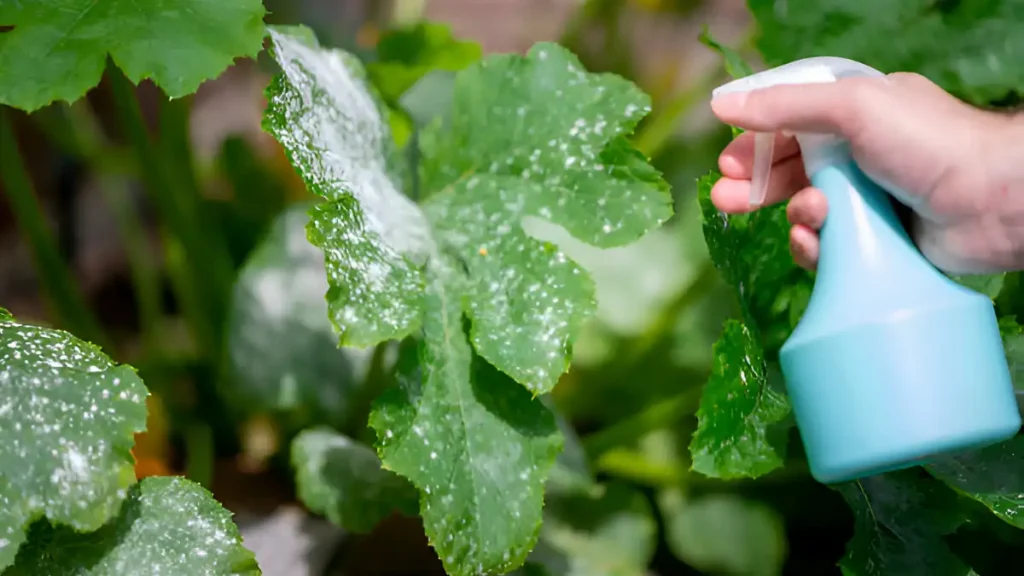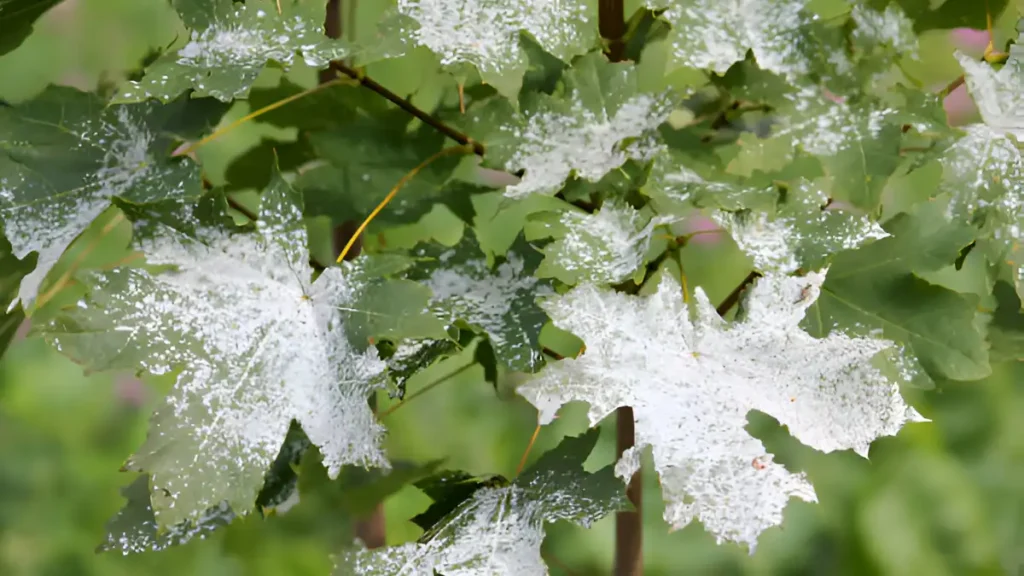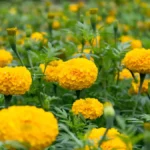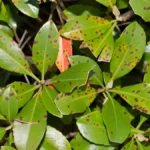Many plants, including ornamental plants, fruits, vegetables, and flowers, are susceptible to the common fungal disease known as powdery mildew. The surface of the plant is covered in a white or gray powder. Numerous fungal species, most frequently those belonging to the Erysiphaceae family, are the cause of it. In addition to reduced output, the disease may cause stunted growth and leaf yellowing. Before using fungicides, a lot of individuals try home remedies for powdery mildew. Read this article to learn how to treat it using natural, homemade products.
What causes powdery mildew on plants:
One of the most prevalent diseases that affect plants is powdery mildew. Fortunately, the condition may be fought with the use of efficient powdery mildew remedies.
Powdery mildew on plants:
- Although powdery mildew fungi are ubiquitous, they do prefer high relative humidity during the night. Spots on the foliage’s surface usually appear on the undersides of leaves, they are the most conspicuous indications of powdery mildew. Infected leaves will prematurely drop from the plant if a sufficient portion of the leaf surface is covered in powdery mildew, which will hinder photosynthesis.
- Powdery mildew can steal vital nutrients from plants, causing leaves to dry out and turn yellow. They can also be carried to your plants by wind, insects, and water splashing, where they overwinter in plant detritus.
Powdery mildew treatment:
Many different plants are susceptible to powdery mildew, a common fungal disease. Thankfully, home remedies are often effective in managing it. These are a few efficient techniques.
How to get rid of powdery mildew:
Eliminate Affected Areas
- First, trim back or remove any areas of your plants where powdery mildew is evident. Composting them could facilitate the spread of the spores, so avoid doing so. Use fungicides designed to precisely treat powdery mildew on plants to eradicate it from them.
Spread Milk
- Powdery mildew can be treated and prevented with milk. Prepare a spray bottle mixture of 40/60 milk to water and use it to mist your plants. Every seven to fourteen days, reapply the fungicide as directed on the label.
Method of Baking Soda
- The spread of powdery mildew can be inhibited by using baking soda. Spray the damaged plants once a week with a solution made of baking soda, soap, and water. Baking soda aids in increasing the leaf surface’s pH.

Vinegar Mist
- The acetic acid in vinegar, which kills fungi, allows it to function as a fungicide. To produce a spray mixture, combine one gallon of water and four tablespoons of vinegar. Apply the liquid to the plants every few days. Vinegar’s acetic acid can help prevent mildew from growing.
Organic Powdery Mildew Remover
- One natural treatment for powdery mildew is to thoroughly spray plants with diluted hydrogen peroxide solutions once a week. It is always better to remove powdery mildew naturally rather than harming your plants with harsh chemicals. Maintaining the right moisture content without overly increasing the humidity around the plants is the best natural defense against powdery mildew.
Prevention of powdery mildew
- Invest in types resistant to powdery mildew and select robust plants. Prune every plant in your yard so that it feels as though it has enough space to breathe since this will improve air circulation. Till the powdery mildew epidemic is under control, do not fertilize the impacted plants. Refrain from watering the plant from above, as damp leaves may promote further growth retardation.
Conclusion:
In conclusion, many different types of plants are susceptible to powdery mildew, a common fungal disease that can weaken plants but is usually not lethal. Preventing severe infestations and maintaining the health of impacted plants need early diagnosis and swift action. Following the above guidelines can help you successfully treat powdery mildew at home.
Certainly! If you’d like to learn more, please consider following our WhatsApp Channel: Harvest Gardening
A frequently asked questions:
Q1. What kills powdery mildew instantly?
A1. Potassium bicarbonate is the most effective remedy for powdery mildew.
Q2. How to treat powdery mildew on roses?
A2. On the stems, buds, and leaves of roses, powdery mildew shows as a white or gray powdery material. The product label specifies that fungicide should be administered every 7–14 days during the growing season to eliminate diseased leaves.
Q3. How to get rid of powdery mildew on houseplants?
A3. To stop powdery mildew, don’t overwater the plants, and keep them in sunlight. One way to treat powdery mildew is to combine baking soda with a few drops of dish soap. Isolate diseased plants to keep powdery mildew from spreading to other houseplants.




1 Comment
Pingback: Downy Mildew: Best Advice for reducing the spread in your yard